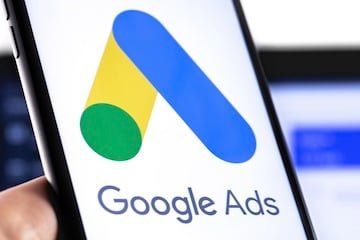Offers for competitors’ names have always been controversial in advertising with a click for a click. IBM could offer, for example, “Amazon Web Services”, although it cannot use the trademark protected in the advertising text. It could say “compare with IBM”, but not “alternative AWS”.
Although Google allows offering competing keywords, advertisers have prevented two factors. First, the keywords of the competition usually lead to a poor score of Google Ads.
Google assigns a quality score to all keywords. QS measures the keyword relevance to the search query, advertising text and input page. The keyword relevance is low if it is not used in the advertising text. Low QS results in higher clicks. So offering competing keywords usually does not make economic sense.
The second reason is ethics. Is it ethical to offer prices for keywords of competition? Why not only offer your own products or brands?
In my experience, it is ethical and usable within common sense. The competitive offer of keywords gives the search for options. Let the best advertise win.
Questions of contestants
Competition ads are likely to be displayed without offering menus to these keywords, thanks to Google’s released match. For example, “Amazon Cloud” and “AWS Cloud Computing”, IBM advertising, if offering, say, “cloud computing” or if Google algorithm assumes that a user seeking “Amazon Cloud” can click on IBM. Therefore, competition ads are likely to appear on related questions if the advertiser does not exclude them through the exclusive keywords.
Advertisers should create specific campaigns that will control ads and input pages for competition questions. However, it is important to have realistic expectations. Campaigns specific to competitors are likely to have low quality and higher CPC scores.
Framework
When planning campaigns competition, first create an input page. The aim is to persuade the search for to choose another option. The input page must strengthen this message and inform visitors about the unique benefits that are not available elsewhere.
Consider the Five9 input page below, the software provider for call centers. Competitive keyword – “Genesys contact center” – launches an advertisement that refers to the page. The page first highlights the Five9 achievements (not displayed below) and then a table comparing functions among its competitors. It’s convincing and convincing.

The Five9 input page table compares the feature among its competitors.
The Five9 comparative page contains two competitors – Genesys and Nice – but could focus on one or the other based on volume and response.
The page contact form has only three fields, which supports conversion. When requesting information from potential customers, less is more.

The menu form has only three fields that encourage conversion.
Advertise text
The low quality score causes advertising from the keywords to show less and are more expensive. In addition, the competitor’s ad is likely to contain the brand name, which will strengthen its relevance to the search for. This ad will almost certainly be in one of the three highest positions – over organic extracts. In addition, ads on the brand tend to use more resources that take up more search space. Therefore, advertising launched based on the keywords of competition may appear, but does not necessarily stand out.
Advertisers cannot include the names of competitors in the advertising text, but they can indicate a better alternative. If Five9 offers “nice AI”, the advertisement title may sound “switch to Five9”.
Notwithstanding it, consider the text of the advertising of the search for the search for.
The “clipping” of the headings and descriptions will be displayed in each ad. Attachment is essential in competition campaigns, but may have low quality scores. However, this is acceptable because the control over the copy matters.
It is worth noting that Microsoft Bing shows multimedia ads based on search images under competition conditions. Below is an example of Docusign’s advertising running Signeasy, a competitor.

The search for “signeasy” on the bing will start graphic advertising Docusign. Click to enlarge.
Advertising reports and keywords
Consolidation of campaign allows Google to collect summary data for better offers strategies.
In general, accounts need only one search campaign for all competing advertising sets and keywords. Usually one competitor is enough for an advertising set, unless the search volume does otherwise.
For example, IBM could place multiple keywords of competition with a small search volume in one advertising with URL address at the keyword level if each competitor had his own input page.
Potential buyers
The Google advertising platform has just evolved, as well as offering prices for keywords of competition. Keywords affect the ads that appear, but other signals – search history, expected performance, user position are also important. Ads are already displayed on competition questions. These searchers are potential buyers who, thanks to optimized experience, make more conversions.
